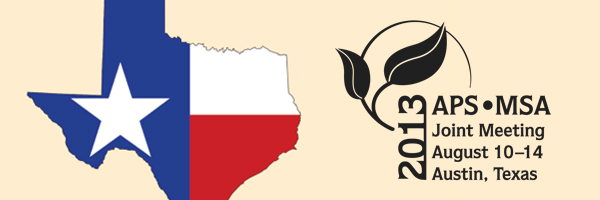APS Homepage
Back

Poster Session: Mycology
© 2013 by The American
Phytopathological Society. All rights reserved.
101-P
Phylogenetic placement of fungi causing spring dead spot of bermudagrass.
F. FLORES (1), S. Marek (1), N. Walker (1)
(1) Oklahoma State University, Stillwater, OK, U.S.A.
Spring Dead Spot (SDS), the most damaging disease of bermudagrass, is caused by three species of ectotrophic root-infecting fungi, Ophiosphaerella herpotricha, O. korrae and O. narmari. These species are placed in Ophiosphaerella based on morphologies of rare sexual states and monophyly of ITS sequences. Recent phylogenetic studies demonstrate Ophiosphaerella to be polyphyletic within Pleosporales, implying morphological characters insufficiently define this genus. To better understand the phylogeny of SDS-causing Ophiosphaerella species, rDNA, EF1a and RPB2 gene sequences were obtained from isolates, type cultures and databases, and used to perform maximum likelihood and Bayesian analysis. Ordinal level phylogenetic trees strongly supported inclusion of a monophyletic lineage of SDS species in Phaeosphaeriaceae within Pleosporineae. In generic level trees, the three SDS species each cluster in well-supported groups that include the Australian type cultures for O. korrae and O. narmari. However, two European type cultures for O. herpotricha, did not group with any of the SDS species. All phylogenetic trees distinguish the three SDS species within a monophyletic genus. SDS-causing O. herpotricha was described prior to the other two SDS-causing species, thus has precedence. But since O. herpotricha type cultures are unrelated to SDS-causing fungi, the genus Ophiosphaerella may be invalid for these fungi. The renaming of the SDS-causing genus seems warranted.